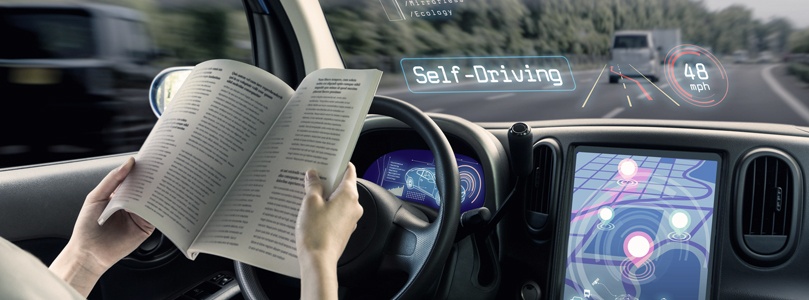Electronic Innovations are making today’s cars smarter by the minute

It was probably unimaginable when the first Fords rolled off the assembly line back in 1913 that not only would the automotive industry continue to thrive over a hundred years later, but that the pace of innovation would accelerate as dramatically as it has in recent years.
It’s no exaggeration to say that today’s cars are getting smarter by the minute, even as the automotive industry faces challenges that are partially due to consumers’ increased expectations of what the modern car is expected to do.
Sure it has to be drivable, but now it also has to respond to your verbal commands, keep you safe and, increasingly, even drive for you.
In 2008, the worldwide economic recession sent the automotive industry into free fall, but in recent years a comeback categorized by relatively strong growth and profitability have resulted in annual sales that have reached prerecession levels in some parts of the world.
But sales only tell part of the story. What’s driving car sales now is very different than what it used to be. Yes traditional factors like gas mileage and durability, not to mention brand loyalty are still important factors to consumers. But electronic innovations have disrupted the automotive industry, creating selling points for cars that literally did not exist even a decade ago.
A staggering 90% of innovations and new features in the automotive industry are now due to electronics according to a study by PwC, making this the key differentiator for most car manufacturers; that alone sets today’s industry apart from any other time in history. Not surprisingly, electronic costs now make up over 30% of total car costs, compared to just 20% less than 10 years ago.
These electronic advancements are powered by increasingly sophisticated software that requires regular updates. Some of today’s cars include over 100 million lines of code, so not surprisingly, the rate of software updates is set to grow tenfold in the next several years. And the more frequent the updates, the greater the need for automated regression testing.
But even as the need for testing increases exponentially, the regulations being introduced are forcing the industry, particularly in the American market, to realign their test scenarios to meet the ever-evolving standards being put in place.
Meanwhile, companies like Apple, Google and Tesla are behind many of these innovations, powering sophisticated infotainment/automotive systems that offer everything from Bluetooth and Wi-Fi connectivity to hands-free voice controls. These companies are impacting the way OEMs operate in the industry, forcing them to adapt to an increasingly horizontally-structured marketplace where they no longer have complete control over vehicle production.
Automotive Evolution
In the early 1900’s, those first Ford cars were part of a vertically integrated OEM system; everything was produced in-house. Technology back then was basic by today’s standards, even as a growing demand spurred mass production of this new means of transportation.
By the 1970’s, major suppliers became a crucial part of the industry so car manufactures established essential relationships with companies who produced automotive parts, expanding the industry’s impact on the global economy. Meanwhile, technological innovation, at this point largely invisible to consumers, became a greater factor in the production of faster and better automobiles.
In the 2000’s, OEMs and the supplier sector went global. What started as a largely American industry had spread throughout the world, leading to technological innovative input from all corners of the globe. For example, the electric car, which had struggled to make an impact in the industry, came into its own when Toyota released the Prius first in Japan in 1997, and then worldwide in 2000, making it the first mass-produced hybrid electric vehicle.
The 2000’s brought digitalization, improved safety features, and ADAS to the forefront of the industry, creating a demand from consumers for greater connectivity between their cars and their devices – cell phones, tablets, etc. – and improved car safety and, by extension, road safety from features like surround-view cameras.
The industry going forward will see the pace of technological advancement continue to accelerate; we’re already at the point where the cycle of new automobile software is measured in months not years. The coming period will be characterized by increased connectivity, including V2X technology that allows vehicles to communicate with moving parts of the traffic system around them, increased automated driving possibilities, a shared mobility that will allow cars to connect more to each other, and a technological convergence that will virtually transform cars into moving computers that will depend less and less on input from human drivers.
But there will be challenges for the industry along the way, first and foremost how to get new innovations into the marketplace faster, while at the same time keeping up with changing government standards and adhering to the new and evolving regulations that those standards will create. Additionally, as infotainment and automotive systems become more complex, the complexity of overall systems will get higher due to increased interactions between components and subsystems.
If Henry Ford were alive today I think he would look on in amazement at where the world has taken his invention over a 100 years after its conception, and wonder where it will take it to next.